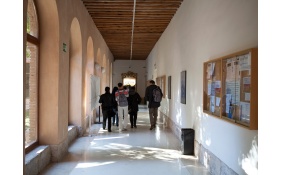César Augusto Quishpe Vásquez
César Augusto Quishpe Vásquez
Categoría: Contrato Proyecto P.I
Departamento: Geología, Geografía y Medio Ambiente
Correo electrónico:
Estudios
Grupos de Investigación
Participa en: Teledetección Ambiental - Environmental Remote Sensing
Líneas de investigación del Grupo
Teledetección Ambiental - Environmental Remote Sensing
- Teledetección y SIG
Proyectos de Investigación
No existen datos en este apartado
Libros
No existen datos en este apartado
Capítulos
No existen datos en este apartado
Artículos
-
QUISHPE VÁSQUEZ, César Augusto; ."Tropical Pacific SST influence on seasonal streamflow variability in Ecuador, This study presents a basin-wide assessment about the spatiotemporal variability of streamflows in Ecuador for the period 1979¿2015. The influence of the tropical Pacific sea surface temperature (SST) on streamflow variability from February to April (FMA) period, as the months showing maximum streamflow for the wet season in Ecuador, and from June to August (JJA), corresponding to the dry season, was analysed. Firstly, a long-term trend analysis was carried out by applying the Sen"s slope estimator and the Mann¿Kendall test to monthly streamflow data from 45 gaging stations located in different basins across Ecuador. While the coastal region showed the highest generalized positive trends from July to January, the results for the Pacific Andean area suggested a strengthening of the seasonality, presenting an overall increase in the streamflow for all months except August, September and October, which showed negative trends. Secondly, a singular-value decomposition (SVD) was applied in order to find the main coupled variability patterns between the FMA streamflow and the quasicoetaneous SST (December to February, DJF), and between the JJA streamflow and the coetaneous SST. The results revealed two main coupled modes for DJF SST/FMA streamflow, the first associated with the canonical El Niño and the second with El Niño Modoki. The latter exerted a major influence on FMA streamflow over most of Ecuador. For JJA streamflow, however, the pattern associated with the traditional El Niño was even more relevant. These results establish the foundations for streamflow modeling in Ecuador based on the Pacific SST, showing the strong response of thestreamflows to different types of El Niño events.". International_Journal_of_Climatology. .
Artículos Electrónicos
No existen datos en este apartado
Congresos
No existen datos en este apartado
Tesis
No existen datos en este apartado





